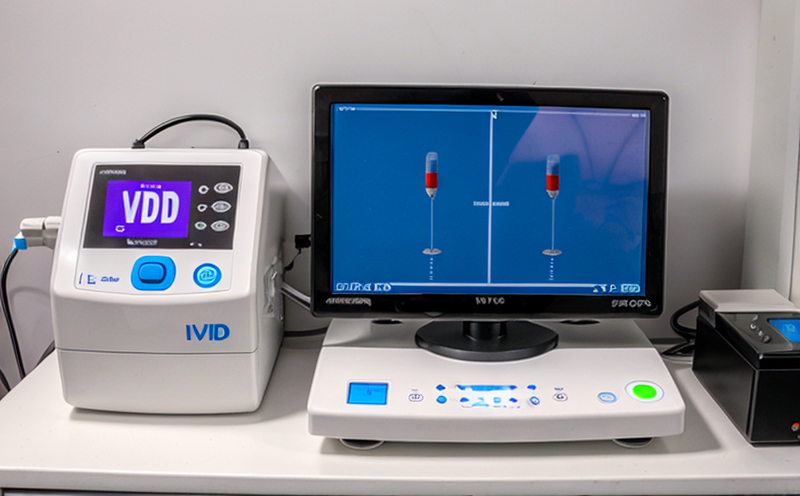Stability Testing of IVD Devices under Environmental Stress
Stability testing is a critical phase in the development and lifecycle management of In Vitro Diagnostic (IVD) devices. This process ensures that medical devices maintain their intended performance, safety, and efficacy over time, even when exposed to environmental stressors such as temperature, humidity, light, and storage conditions.
The goal of stability testing is to demonstrate that the device remains within acceptable limits for its intended use after being subjected to specified environmental stresses. This is particularly important for IVD devices because they are often used in a wide range of environments and under varying conditions by healthcare professionals worldwide.
According to ISO 17025, the laboratory must be capable of conducting tests that generate valid results. For stability testing, this involves ensuring that the test environment accurately simulates real-world conditions and that the equipment used is appropriate for the specimen being tested.
The specimen preparation process for IVD devices typically includes diluting reagents or calibrating them to ensure they are within the required concentration range. The specimens must also be stored under controlled conditions until the start of the test. During the test, temperature and humidity chambers are used to simulate different environmental conditions.
The instrumentation used in stability testing includes climate-controlled chambers capable of simulating extreme temperatures and humidity levels. These chambers allow for precise control over variables such as temperature, relative humidity, light exposure, and time. Additionally, the laboratory must be equipped with appropriate analytical instruments to monitor changes in the specimen's performance parameters.
The reporting process involves documenting all test procedures, conditions, and results. The report should include information on any observed deviations from expected performance or stability limits. This documentation is essential for regulatory compliance and for ensuring that the device meets all relevant standards and specifications.
| Parameter | Description |
|---|---|
| Environmental Stressors | Temperature, humidity, light exposure, storage conditions |
| Specimen Preparation | Dilution, calibration, controlled storage |
| Instrumentation | Climate-controlled chambers, analytical instruments |
| Testing Duration | Duration varies based on device type and expected shelf life |
| Data Collection | Performance parameters, stability limits |
The testing duration can vary significantly depending on the specific IVD device being tested. For example, a simple diagnostic test might require only 24 hours of exposure to extreme conditions, while more complex devices may need up to several months.
In summary, stability testing is an essential part of ensuring that IVD devices remain reliable and effective throughout their lifecycle. By subjecting the device to environmental stressors under controlled conditions, laboratories can identify potential issues early in the development process and ensure compliance with regulatory requirements.
Scope and Methodology
The scope of stability testing for IVD devices is broad and encompasses a range of physical and chemical parameters that can affect device performance. The methodology involves subjecting the device to various environmental stressors, including temperature, humidity, light exposure, and storage conditions, over an extended period.
- Temperature: The device is exposed to high and low temperatures to simulate extreme conditions encountered in different regions or during transport.
- Humidity: The device is subjected to varying humidity levels to assess its resilience against moisture.
- Light Exposure: The device is exposed to light of specific wavelengths to determine its stability under photostability testing.
- Storage Conditions: The device is stored in controlled environments to evaluate its long-term performance and stability.
The methodology also includes the use of climate-controlled chambers capable of simulating different environmental conditions. These chambers allow for precise control over variables such as temperature, relative humidity, light exposure, and time. Additionally, the laboratory must be equipped with appropriate analytical instruments to monitor changes in the specimen's performance parameters.
Eurolab Advantages
EuroLab is a leading provider of stability testing services for IVD devices. Our team of experts ensures that every test is conducted according to the highest standards, providing reliable and accurate results.
- We use state-of-the-art climate-controlled chambers capable of simulating a wide range of environmental conditions.
- Our laboratories are equipped with advanced analytical instruments that provide precise measurements for performance parameters.
- We have extensive experience in working with IVD devices, ensuring that our tests meet all relevant standards and specifications.
- We offer comprehensive reporting services, including detailed documentation of all test procedures, conditions, and results.
- Our team of experts provides guidance on specimen preparation, ensuring the accuracy and reliability of the testing process.
- We work closely with clients to ensure that our tests meet their specific needs and requirements.
EuroLab's commitment to excellence and innovation ensures that we provide high-quality stability testing services for IVD devices. Our expertise and experience in this field make us the trusted partner for quality managers, compliance officers, R&D engineers, and procurement professionals.
Use Cases and Application Examples
- Preservative Stability: Testing the stability of preservatives used in IVD devices to ensure they remain effective over time.
- Reagent Stability: Assessing the stability of reagents under various environmental conditions to ensure consistent results.
- Lamp Durability: Evaluating the durability of light-emitting lamps used in diagnostic instruments.
- Capillary Tube Performance: Testing the performance of capillary tubes over time to ensure they remain intact and functional.
- Diagnostic Test Kits: Stability testing is crucial for ensuring that diagnostic test kits provide accurate results under a variety of conditions.
- Laboratory Instruments: Evaluating the stability of laboratory instruments over time to ensure they remain calibrated and reliable.
In summary, stability testing plays a vital role in ensuring the reliability and accuracy of IVD devices. By subjecting these devices to environmental stressors under controlled conditions, laboratories can identify potential issues early in the development process and ensure compliance with regulatory requirements.





